3 min read
Honchō Scoops Up Two UK Search Awards!
It’s official, we've added not one, but two shiny trophies to our awards cabinet! We’re over the moon to share that we’ve triumphed at the UK Search...
7 min read
 Jade Halstead
:
Oct 25, 2022 12:05:56 PM
Jade Halstead
:
Oct 25, 2022 12:05:56 PM
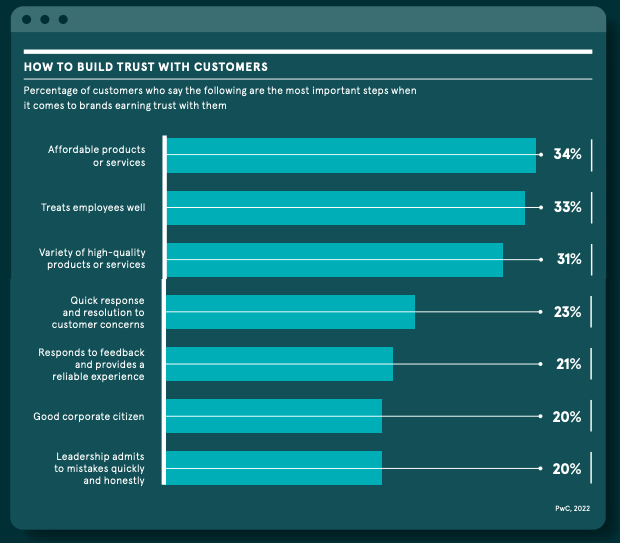
For many retailers, 2022 has been an uncomfortable transition from the growth seen during the pandemic. Supply chain was adjusted, more capacity in the warehouse added, aggressive delivery options needed, and an increase in the staff to deal with the increase in online shopping.
An ideal post-Covid scenario would have been for the market to return back to normal. However, rising inflation, increased interest rates, and the ongoing cost of living crisis have all forced consumers to think about spending behaviours.
Q4 – the last three months of the calendar – is usually the biggest sales quarter of the year. Key events such as Black Friday and Christmas are big shopping periods, and occasions when people are prepared to spend more than usual – especially from brands they wouldn’t throughout the rest of the year.
This gives advertisers a huge opportunity to raise their brand’s awareness and drive more sales.
With household finances under pressure, Q4 will be challenging for brands and consumers alike. In this article, we look at the ways brands can still have a successful Q4, by making data-led, strategic decisions that push them through the next few months.
With £4.4 billion expected to be wiped off consumer spending this quarter, retailers are in for a difficult ride. The season comes with consumers expecting discounted pricing but can retailers afford to meet that expectation any more?
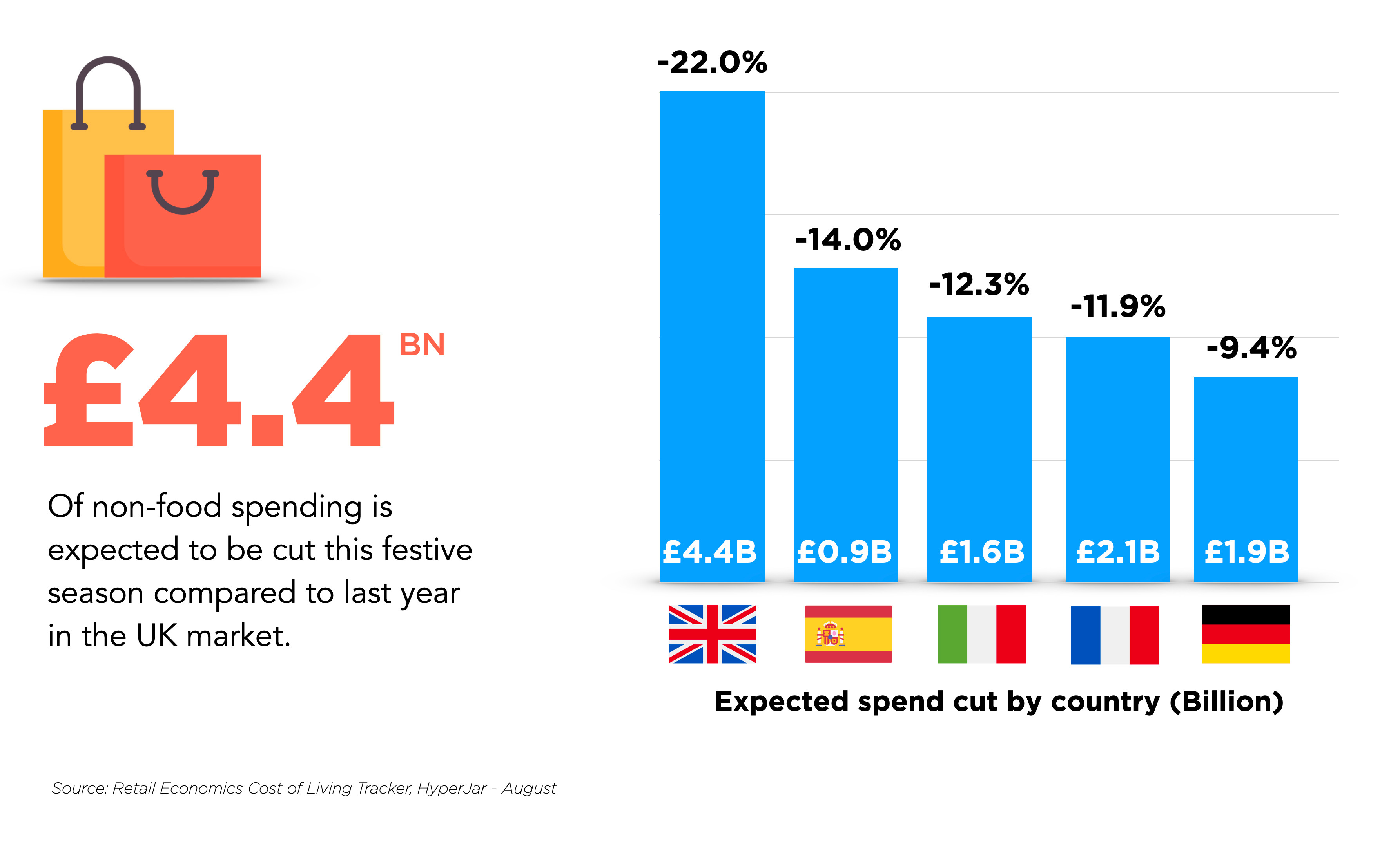
Data from Google Trends tells us that searches for ‘save money’ are at a 5-year high with 17k in the last month alone. That’s not exactly encouraging for brands in Q4.
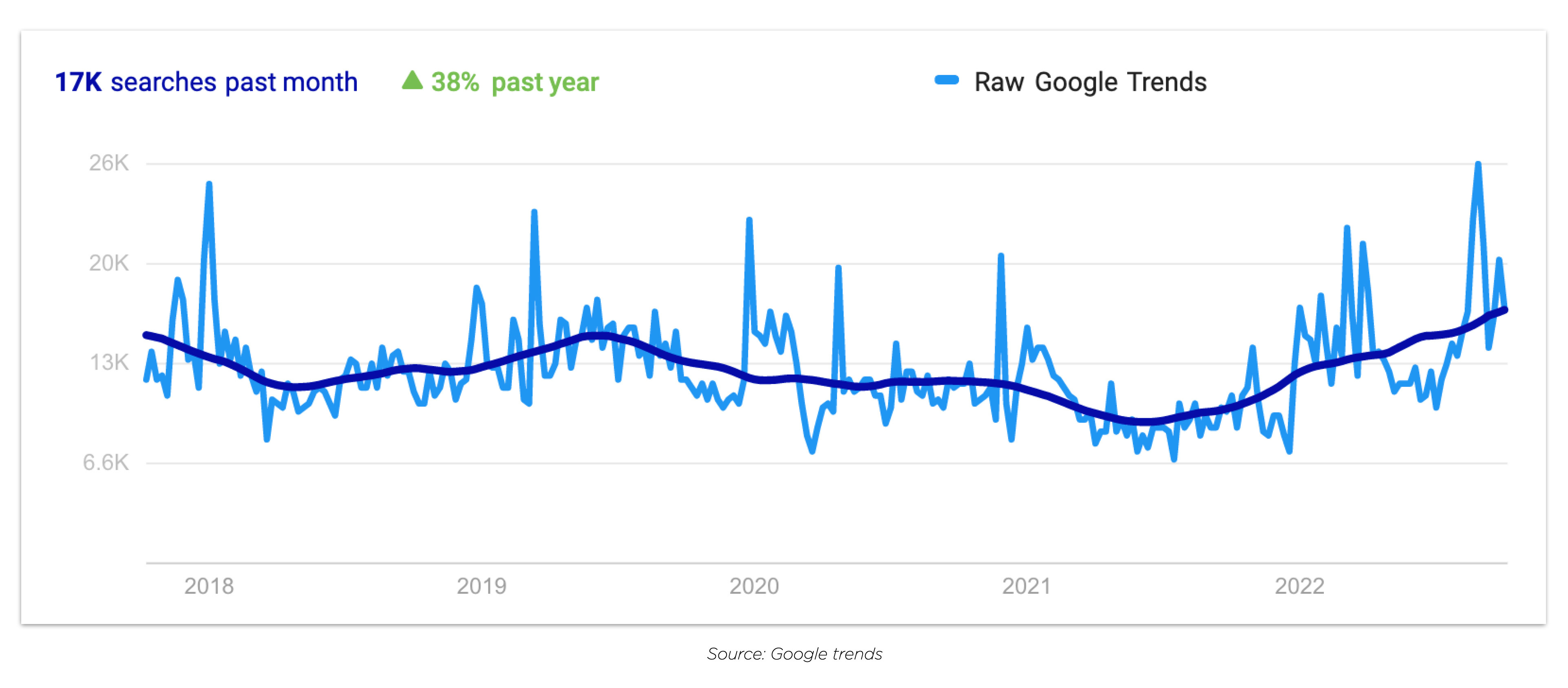
Source: Google Trends
The least affluent families have been hit hardest by the current climate, with a decrease of 16.5% in discretionary income in August compared to last year.
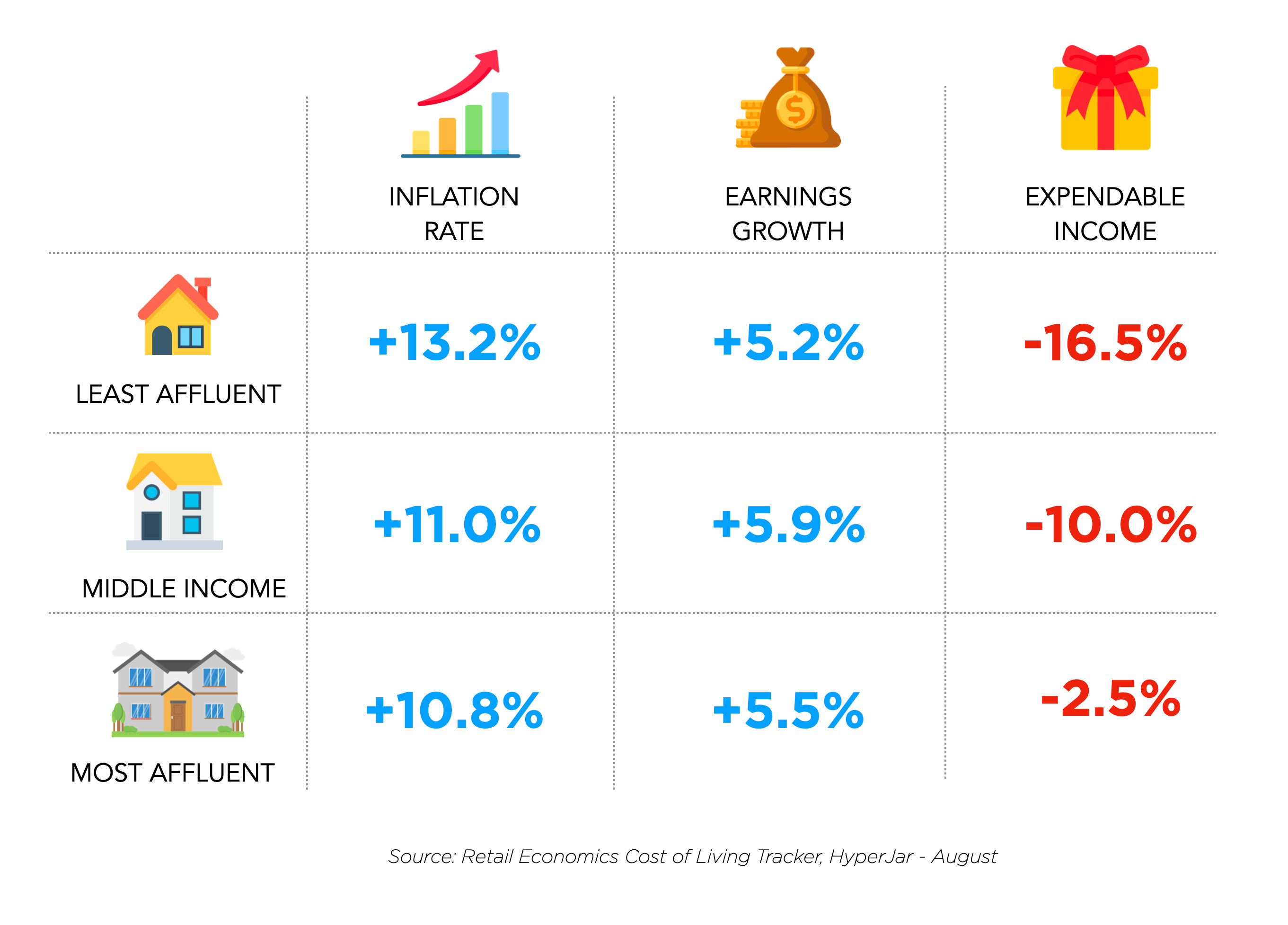
The areas of retail most affected by cut back of consumer spend lean towards gifted items such as apparel, electronics and toys.
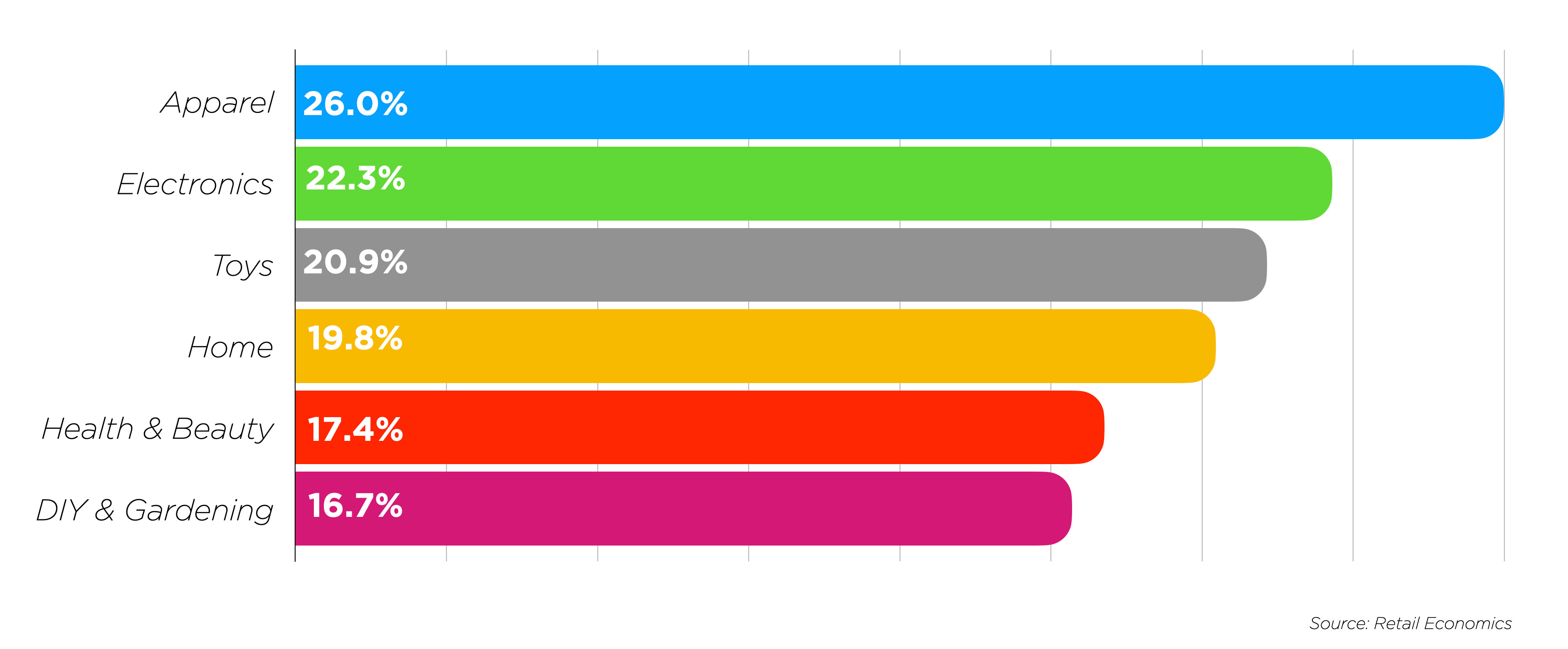
Retailers with customers from non-affluent backgrounds will really have to think about how to get through this period to survive and maintain already thin margins.
As Q4 historically is a great time of the year for eCommerce – 50% of retailers expect sales to increase during this peak time of the year, but 58% of consumers plan to cut back on spending. This suggests retailers aren’t completely prepared for the challenge ahead.
This asks the question, are brands really connected to their audience?
As we move further into Q4 continually testing, analysing, learning and adapting is going to help improve your sales.
Throughout the rest of this article we look at the most important elements of your brand that you should be focusing on.
As always, if you need support with strategy or implementing anything mentioned, reach out and the Honcho team will get back to you within 24 hours.
In business it’s easier (and cheaper) to sell to your existing customers than to find a new one. Focusing on the customers you already have, and delivering value to them, should be a priority for retailers.
It’s also smart to remember that value looks different to all consumer bases. Finding what your consumers value is key to how you make smart decisions. You can find out what your consumers value in many ways: interviewing, surveys, Instagram polls.
Understanding this prior to creating a strategy is crucial.
Many brands have a good idea of customer base on a demographic and psychographic level. However, the depth of most brand’s customer personas only scratch the surface.
Erin Brookes, Head of Retail, Alvarez & Marshal said: “For retailers, granular understanding of their customer base could mean the difference between survival and liquidation over the coming months”.
Gaining this insight isn’t that difficult. Des Traynor, CEO of Intercom believes, “one interview is worth 1000 surveys’, and we agree.
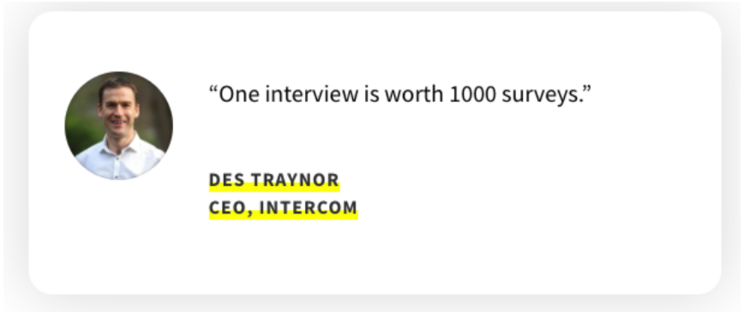
Reaching out to several of your consumers before you start amending your Q4 marketing strategy could be the best time spent all year for your brand.
With the granular detail you will gain from those interviews, you can make consumer-focused decisions that’ll support your sales and consumer retention this year.
Often the communication takes place in silos driven by channel objectives instead of business objectives. Whether it’s email, social or search, how brands communicate needs to be centrally managed for a consistent message.
Messaging at the right time to the right customer with the right offer will land you a sale. But how often are you getting all three perfect? This is another reason why granular understanding of your customer should be a priority.
Your customer base should be as segmented as possible with a system hosting all customer data, sales, interactions etc. You can use this to create the perfect message, for the perfect customer at the perfect time!
Overall, knowing your most profitable segments and approaching them with relevant offers just when they need them will help boost your sales.
When communicating with your audience over the coming months it’s important to consider:
Be empathetic
Sales messages should not be the only message you send your customers this peak season. Less affluent consumers have been hit hard and if nothing else, showing an understanding of their situation can win the hearts and minds of your customers.
Value for money or longevity
When selling products it’s important to make the proposition relevant to the customer. The message shouldn’t just be about price but how useful it is for the customer. A message of durability and longevity could work well, especially in the current climate.
Not all trends are relevant
While it’s useful to be part of emerging conversations or a new trend, it’s important to know what not to say. Even if there is no negative outcome, the value of the brand can be diluted unless the execution is better than others.
Need support? Contact us here!
According to Which, 98% of the discounts advertised on Black Friday in 2020 – including promotions on popular tech, home and personal care products – were available for the same price or cheaper in the six months after the sales.
The two driving forces to building trust with consumers are customer service quality and honesty.
Advertising false sales is one quick way to lose the trust of your customer base.
Although we understand margins are tighter than ever, honesty lasts a lifetime so when creating deals and sending offers, be honest with your customers. Tell them exactly what they are getting. Remember, if you’re talking to the right customer at the right time and solving their ‘job to be done’, you’re moving in the right direction.

As consumers become more savvy with their purchases, they’re also becoming more picky as to who they’re spending with. 71% of consumers have made a purchase decision based on the quality of a brand’s customer service, which tells us that improving your customer service is crucial.
What do consumers want?
91% of consumers are more likely to make another purchase after a positive customer service experience.
Customers expect your response time to be as quick as them pressing ‘add to cart’. In our fast-paced digital world, if a potential customer wants to purchase something and has a question, they want the answer almost immediately, not in 24-48 hours. Don’t let your customers buy from someone else while they’re waiting for you to respond.
To improve your response time, first calculate what it is and start implementing resources or tools to improve this.
Consider:
Making your returns process easy for consumers is essential for good customer service. However, your business shouldn’t be losing out because of it.
Returns cost UK retailers an estimated £5.2 billion a year on average.
January returns are increasing 39% year on year.
To improve your returns process for both your brand and consumers, first analyse your data and customer feedback to see where improvements can be made.
For extra feedback, make sure there’s a mandatory ‘why’ box in your returns form and then send a post-return survey.
How businesses can save on item return fees:
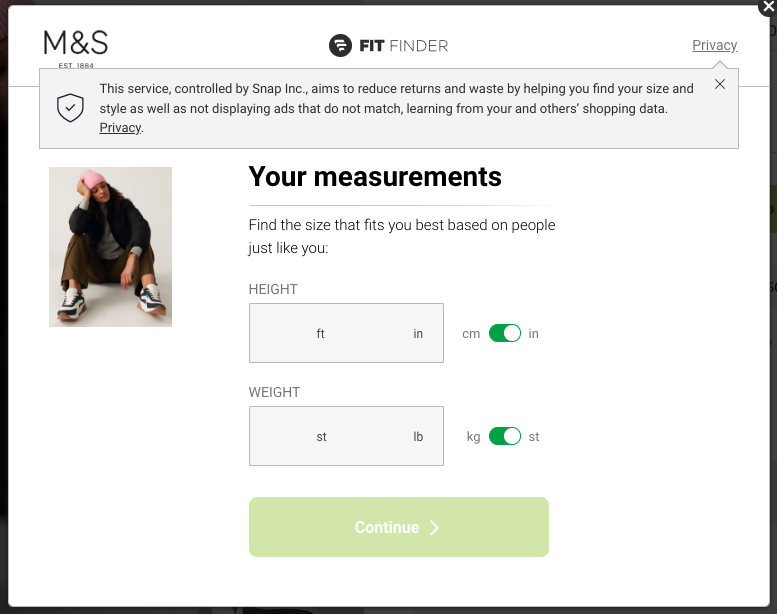

Taking everything mentioned above into consideration, leaning on your most profitable customers in Q4 with personalised and segmented messaging will boost sales.
Types of buyers:
You can segment your customers into different categories and tailor your messaging accordingly. A few example segments are:
Frequent, Active Single Buyers
People who are buying a single product or low value products. Promotion bundles offering more value for money could convert some of single product buys and deliver a better Average Order value.
Infrequent Buyers – People who are buying products between certain intervals
Dormant – People who haven’t bought in the last few months. New product announcements, offers on the same product or a new variation of the product they bought could be a good way to remind them of your brand.
Elite – People who buy a few times in the last 12 months with a value beyond a certain threshold. Reward the loyalty with better offers and value-add messaging. Send extra product samples to keep their interest in other related products.
Email subscribers – people who are interested in any new products or range. People who signed up through your blogs or social posts would want to stay in touch and hear more about the new product launches and offers.
Retailers must look at retention and loyalty as a core part of the growth strategy. Exclusive deals for your most valuable customers is a nice way to recognise the importance of their relationship with the brand.
Testing what messaging works better for your customers is going to help boost your conversion rates this peak season and beyond. ‘Place order’ as a CTA has delivered the most revenue across the 241 retailers benchmarked by IMRG.
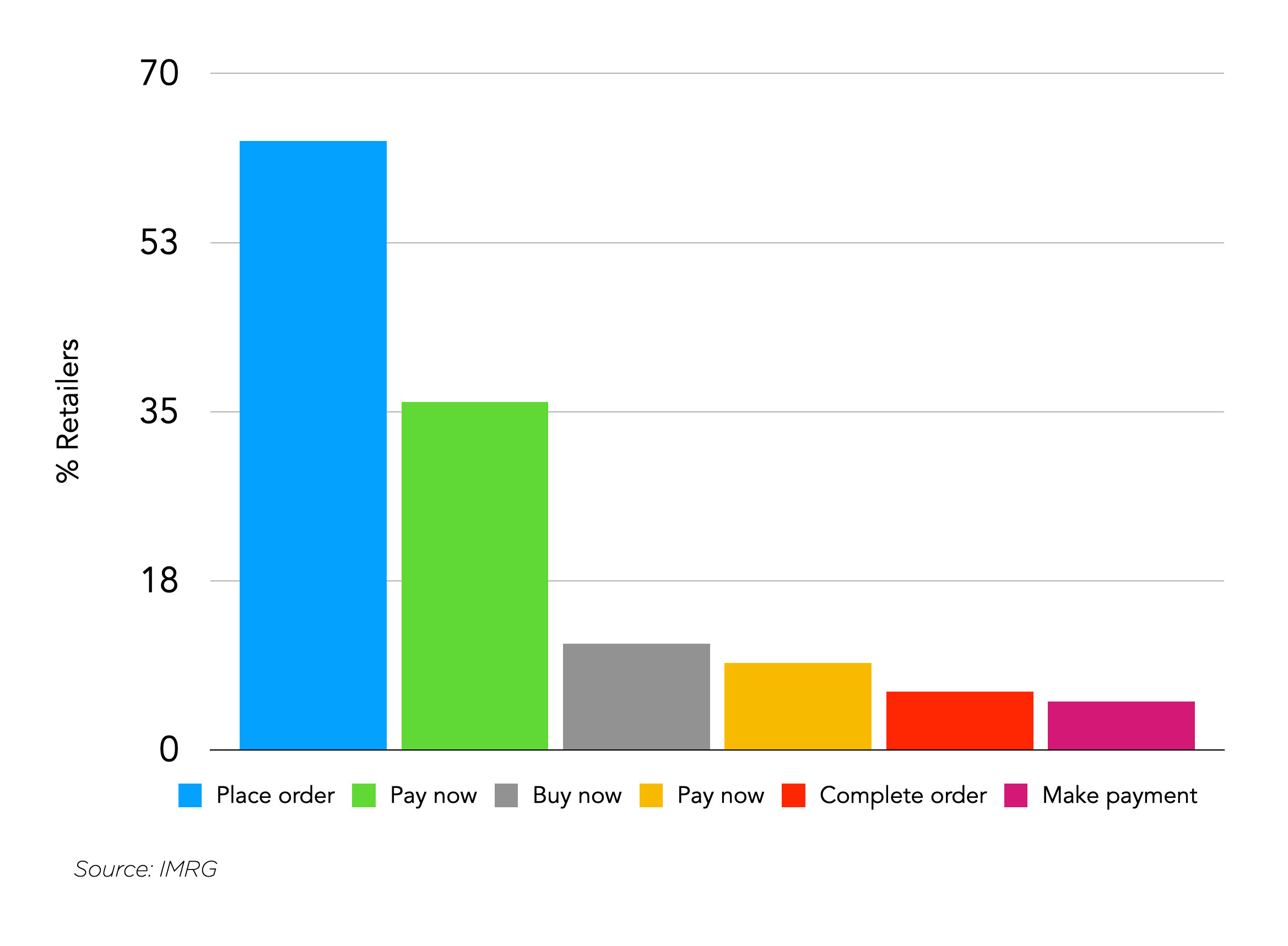
Honcho is currently working with a number of e-commerce brands executing strategies based on insight collected from the sector and real-time performance outcomes through mainstream advertising platforms. Honcho has extensive experience supporting retailers through a variety of services including all areas of paid advertising, organic search, social consultancy and campaign execution.
To learn how Conversion Rate Optimisation can help solve some of your sales challenges, read this article.
Switch the focus to an empathetic one and how can you help your customers rather than ‘how can we meet this quarter’s targets?’
“The companies that will win are the ones that have the strongest customer relationships, retain their customer base and are deeply engaged with it across as many channels as possible,” commented Graeme Howe, MD of Ecommerce Expo.
This is a significant time to try and get your key messaging and customer segments right. Ensure you’re driving all decisions with consumer data in mind, especially what you learnt from completing customer interviews.
Although profit now is what brands want, consider the impact of what ‘doing anything’ to achieve short term goals could have on your business.
Support your customers through this tough time and they’ll remember.
Let Honcho help solve your business challenges this Q4.
Let’s chat! Fill out this contact form and we’ll get back to you within 24 hours.

3 min read
It’s official, we've added not one, but two shiny trophies to our awards cabinet! We’re over the moon to share that we’ve triumphed at the UK Search...

5 min read
Understand ecommerce attribution models which attribution models can maximise your marketing efforts and ROI.

3 min read
Explore how social commerce is changing the way we shop online, blending social interactions with digital commerce for a seamless buying experience.